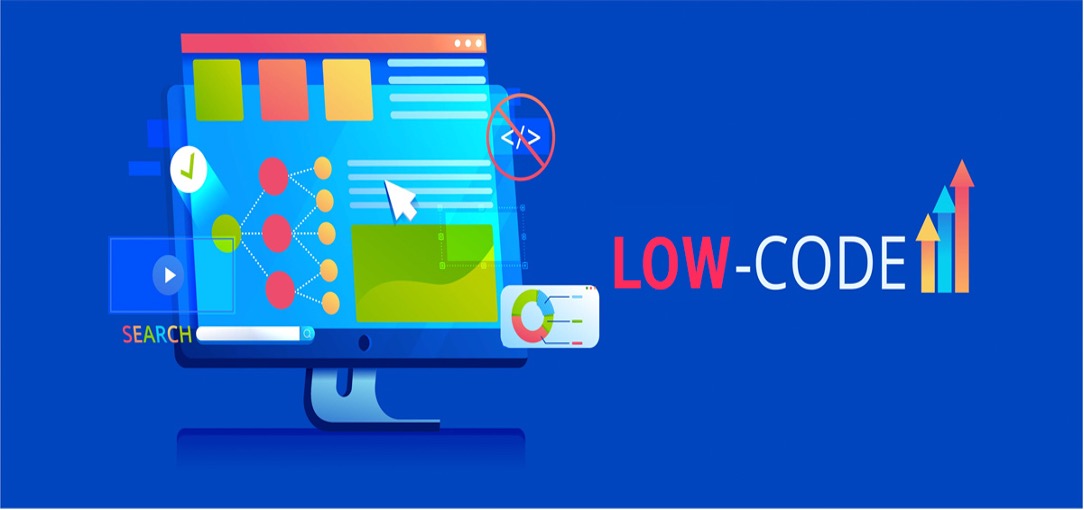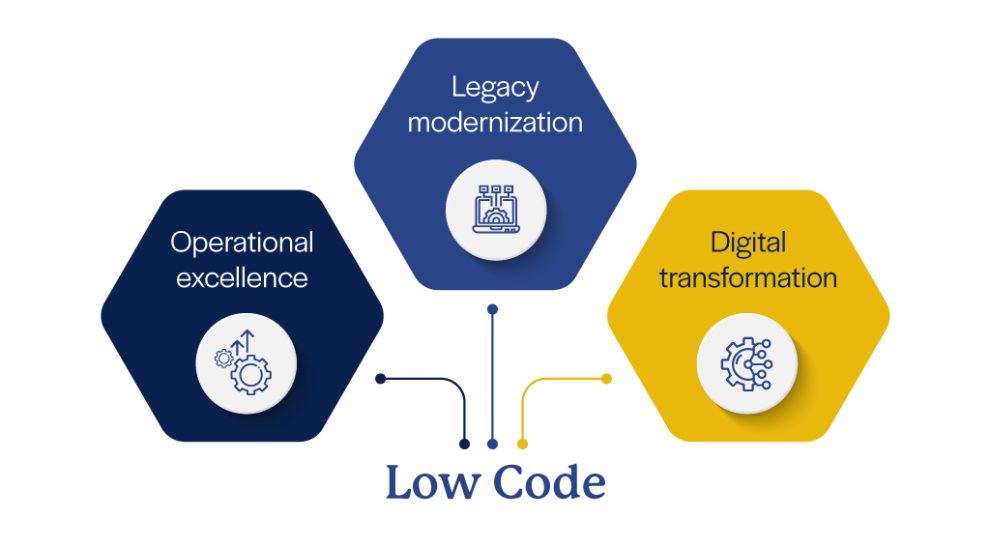In today’s fast-paced digital landscape, businesses need to quickly adapt and innovate to stay ahead of ever-evolving customer needs. However, traditional software development approaches often struggle to keep up with the demand for rapid iteration and experimentation.
This is where low-code platforms come in — revolutionizing app development with intuitive, visual interfaces that abstract away complex coding and enable anyone to rapidly build prototypes and MVPs. But what exactly are low-code platforms, how can they turbocharge your innovation, and what should you consider when leveraging them?

Demystifying Low-Code: More Than Just Drag-and-Drop
Low-code platforms provide development environments that minimize the need to write custom code, enabling faster app delivery with leaner teams. While often associated with simple drag-and-drop interfaces, modern low-code platforms offer much more.
They cater to varying technical skill levels — from empowering pro developers with sophisticated capabilities to enabling citizen developers to contribute. The unifying principle is abstraction: hiding away unnecessary coding complexity so you can focus on delivering core app functionality and exceptional user experiences.
The Spectrum of Low-Code Environments
Low-code platforms span a spectrum from basic build-your-own-app creators to advanced enterprise-grade development environments:
- Citizen Developer Platforms: Enable non-technical users to build simple apps via intuitive drag-and-drop interfaces.
- Cross-Enterprise Platforms: Offer professional developers pre-built components/templates and easy integration to streamline enterprise app development.
- Process Application Platforms: Specialize in digitizing business workflows, forms and data collection via guided development.
Key Capabilities
While capabilities vary across the spectrum, some common low-code platform features include:
- Drag-and-drop app builders for visual development
- Libraries of reusable UI components / templates
- Connection to data sources / API integration
- Collaboration capabilities
- Built-in security frameworks
- Cross-platform deployment
The Benefits of Low-Code for App Innovation
Leveraging low-codedevelopment platforms offers many advantages that drive rapid innovation:
Speed and Agility
Low-code enables much faster development cycles measured in days or weeks rather than months. The ability to quickly build and iterate working prototypes fuels rapid experimentation and learning.
Accessibility
Intuitive visual interfaces lower the barrier to contribution, empowering subject matter experts and citizen developers to actively participate in innovating. This amplifies idea diversity.
Enhanced Collaboration
Stakeholders across teams can contribute ideas and provide input on prototypes as they evolve. Streamlined communication and real-time collaboration accelerate innovation.
Reduced Risk
The ability to quickly validate concepts via working prototypes minimizes wasting effort from going down the wrong path. Fail fast, learn quicker.
Cost Savings
Low-code enables developing minimum viable prototypes with smaller, cross-functional teams. This significantly reduces associated costs and resources for experimentation.
Choosing the Right Low-Code Platform
With the exponential growth in low-code tools, finding the right platform for your needs is key for innovation success. Here are crucial factors to evaluate:
Ease of Adoption
Consider the platform’s learning curve and how well it aligns with your team’s technical skill levels. More proficient developers may prefer advanced capabilities over ease of use.
Feature Set
Ensure the platform provides the functionality, components and connectors required to build your applications. For example, the ability to develop offline-capable mobile apps.
Extensibility & Customization
Review options for extending system capabilities and customizing where required. Some citizen developer platforms are quite constrained while enterprise-class ones enable advanced customization.
Security
Security capabilities are crucial especially when dealing with sensitive data. Evaluate built-in authentication, data encryption etc. as relevant to your use case.
Scalability
Assess platform ability to scale from supporting prototypes to enterprise-grade production applications with high user volumes, data throughput etc. based on your anticipated growth.
Pricing
Pricing model options range from free to monthly subscriptions to usage-based. Assess these variants relative to your budget and anticipate future needs.
Best Practices for Low-Code Prototyping
Leveraging a low-code platform tailored to your needs lays the foundation for innovation success. Next, apply these prototyping best practices for maximum impact:
Define Goals and Users
Drive alignment across teams by clearly defining the problem you are solving, objectives and intended users upfront before prototyping.
Prioritize Simplicity
Start by prototyping just enough functionality to convey the core concept and user workflow rather than all possible features.
Leverage Accelerators
Make the most of your platform’s built-in templates, UI components and connectors to accelerate development.
Gather Early Feedback
Share prototypes internally and with end users early to gather feedback, refine concepts and iterate rapidly.
Enable Collaboration
Foster a culture of collaboration by sharing prototypes across diverse teams to accelerate experimentation and amplify perspectives.
Integrate Frequently
Connecting prototypes early and often with real data sources and external systems ensures more accurate validation.
Scaling Up Beyond Prototypes
While low-code delivers exceptional speed and flexibility for prototyping minimum viable products, scaling apps to complex production grade systems brings additional considerations for manageability, security and performance.
Underlying low-code platforms may struggle to keep up, requiring transitioning all or part of the applications to traditional coding and cloud-native architectures better suited for scale, along with DevOps practices for reliability.
The key is leveraging low-code from the start for rapid experimentation while architecting applications in a modular way that facilitates integrating other technologies where needed for scale.
Embrace the New Era of App Innovation
Low-code development platforms fundamentally transform every facet of building software by simplifying complexity. This new era powered by low-code democratizes app innovation, amplifies collaboration, and accelerates experimentation and learning.
By embracing low-code for prototyping and solution incubation, combined with cloud-native practices later where necessary, companies can gain unprecedented speed and agility to adapt quickly. They unlock new avenues to out-experiment and out-innovate competitors.
The time is now to unleash rapid app innovation with low-code’s disruptive potential to build competitive advantage for the next decade. Begin by selecting a platform aligned to your team’s skills and app goals, then start small while empowering teams to think big.
















Add Comment